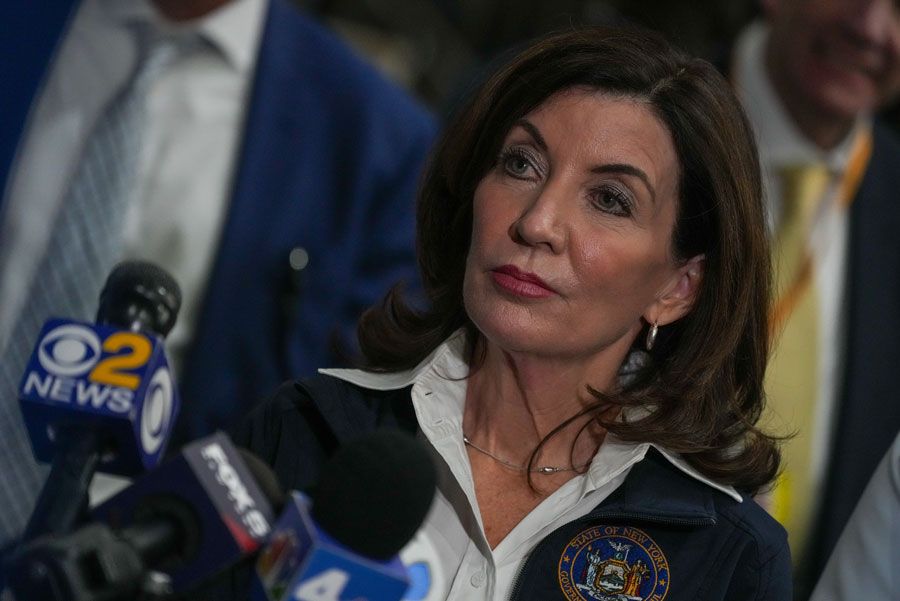
ALBANY, N.Y. – New York State health officials are urging residents to stay current with both flu and COVID-19 vaccines this fall, issuing new statewide guidance that calls for vaccinations across nearly all age groups. The move comes amid growing confusion over federal recommendations and insurance coverage, prompting New York and other states to step in with their own policies.
The state’s Department of Health now recommends COVID-19 shots for children as young as six months, adolescents through age 18, and all adults – particularly those with underlying health conditions. The guidance mirrors longstanding flu vaccine recommendations and aligns with advice from leading medical associations.
To expand access, Governor Kathy Hochul signed an executive order classifying vaccine availability as an emergency priority. The order allows pharmacists to prescribe and administer COVID vaccines directly, bypassing potential delays in physician offices. State officials said the measure will remain in place until permanent legislation is crafted.
At the same time, the state is pressing insurance companies to maintain coverage for vaccines, especially for children, even as federal schedules are being reconsidered. Hochul has publicly stated that vaccine costs should not be a barrier for families.
New York is not acting alone. Neighboring Northeastern states – including New Jersey, Connecticut, Massachusetts, and Pennsylvania – have adopted similar guidance, forming what some observers call a regional health bloc. On the West Coast, California, Oregon, and Washington have also issued broad vaccination recommendations, diverging from recent federal guidance.
The widening state-federal divide reflects growing unease with changes in federal vaccine policy. Polls show many Americans believe recent federal decisions have been influenced more by politics than science, eroding trust in national health recommendations.
Public health experts note that flu vaccine uptake has already declined nationwide, with distribution falling more than 15 percent compared to pre-pandemic levels. Meanwhile, pharmacies and providers are grappling with uncertainty over whether vaccines will be fully covered or reimbursed under evolving federal guidelines.
By expanding access through pharmacies and reinforcing insurance coverage, New York officials aim to prevent further drops in vaccination rates and to minimize confusion ahead of the fall and winter respiratory virus season.
New York Vaccine Guidance
| Fact | Details |
|---|---|
| Who Should Get COVID-19 Vaccines | Children 6 months to 18 years, all adults, especially high-risk groups |
| Flu Vaccine Recommendation | All New Yorkers 6 months and older |
| Access Expansion | Governor’s executive order allows pharmacists to prescribe and administer COVID vaccines |
| Coverage Concerns | State pushing insurers to cover vaccines despite shifting federal guidance |
| Regional Context | Similar policies adopted in neighboring Northeastern states and on the West Coast |
| Reason for Action | Federal policy changes, public skepticism, and declining vaccination rates |
Q&A: What You Need to Know
Q: Why is New York issuing its own guidance?
A: State officials believe recent federal vaccine decisions are unclear and risk reducing access. New York’s guidance ensures broad eligibility and removes barriers such as prescription requirements.
Q: How does the executive order affect access?
A: The order allows pharmacists to prescribe and administer COVID-19 vaccines directly. This means residents don’t need a doctor’s appointment to get vaccinated.
Q: Will insurance cover these vaccines?
A: New York is pressing insurers to maintain coverage, especially for children, despite uncertainty at the federal level. The state aims to prevent families from facing out-of-pocket costs.
Q: How does this compare to federal recommendations?
A: Federal guidance has narrowed coverage, sparking confusion. States like New York are stepping in with broader eligibility to maintain public health protections.
Q: Are other states doing the same?
A: Yes. Northeastern states and West Coast states have issued similar recommendations, forming regional blocs that diverge from federal policy.


